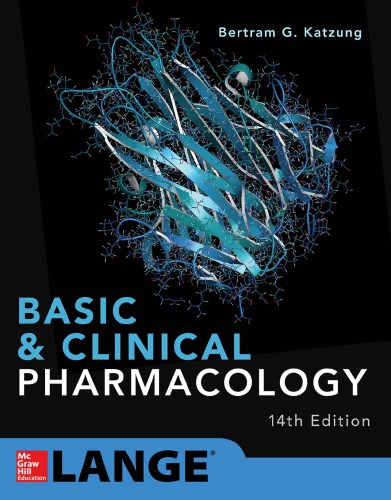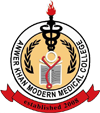Anwer Khan Modern Medical College
Library Management System

| Title: | Basic & clinical pharmacology |
| Author Name: | Bertram G. Katzung |
| Author Sur Name: | KATZUNG,Bertram G. |
| Author information: |
|
| Edition/Published: | 14th ed. _New York : Mc Graw Hill , 2018 |
| New to this edition: |
|
|
Physical Description: : <p>xi, 1250 pages: illustrations (chiefly color); 28 cm</p> <p> </p>.; ...( a LANGE medical book ) |
| Notes | Includes bibliographical references & indexes. |
| Includes Index: | 1183-1250 |
| ISBN No's: | 978-93-5316-069-2 , , |
| Bar Code's: | , , |
| Shelf Location's: | , , |
| Classification | |
| Subject: | Pharmacology |
| Dewey Class No: | 615.1 |
| LC Classification: | RM301.28 |
| Other's Book Information | |
| Book ID No: | 2358 , 2357 , 2359 |
| Total Books: | 3 |
| Date of collection's: | 26-Dec-2018 , 26-Dec-2018 , 26-Dec-2018 |
| Donation / Purchase: | Purchased |
| Language: | English |
| Status: | Available |
| Department: | Pharmacology |
| Synopsis: |
|
| Description: |
|
| Key Features: |
|
| Summary: |
"The fourteenth edition of Basic & Clinical Pharmacology continues the extensive use of full-color illustrations and expanded coverage of transporters, pharmacogenomics, and new drugs of all types emphasized in prior editions. In addition, it reflects the major expansion of large-molecule drugs in the pharmacopeia, with numerous new monoclonal antibodies and other biologic agents. Case studies accompany most chapters, and answers to questions posed in the case studies appear at the end of each chapter. The book is designed to provide a comprehensive, authoritative, and readable pharmacology textbook for students in the health sciences. Frequent revision is necessary to keep pace with the rapid changes in pharmacology and therapeutics; the 2-3 year revision cycle of this text is among the shortest in the field, and the availability of an online version provides even greater currency. The book also offers special features that make it a useful reference for house officers and practicing clinicians." |
| Abstract: |
The 14th ed. Edition of basic & clinical pharmacology provides the latest information on drugs, drug therapies and advances in pharmacology. The book includes coverage of new and emerging drug and drugs classes, including immunotherapies and antiviral medieations. The impact of genetic variations on drug metaboliom and efficaey is also covered in the edition. More than B w full-color illustrations. are included to aid in understanding of drugs mecharism and pharmacology concepts. The book also contains updated information on drug interactions and this potertial impact on treatment ahtemes. The 14th ed. Of basic and clinical pharmacology by Katzung includes interactive features such as quizzes, animation and flashcards to enhance learning . Overall this book alms to provide the most up-to-date and compre hensive information on pharmacology, including the latest drugs and drug therapies, as well as advances in pharmacogesnonies and peronalized medicine. |
| Preface: |
The fourteenth edition of Basic & Clinical Pharmacology continues the extensive use of full-color illustrations and expanded coverage of transporters, pharmacogenomics, and new drugs of all types emphasized in prior editions. In addition, it reflects the major expansion of large-molecule drugs in the pharmacopeia, with numerous new monoclonal antibodies and other biologic agents. Case studies accompany most chapters, and answers to questions posed in the case studies appear at the end of each chapter. The book is designed to provide a comprehensive, authoritative, and readable pharmacology textbook for students in the health sciences. Frequent revision is necessary to keep pace with the rapid changes in pharmacology and therapeutics; the 2–3 year revision cycle of this text is among the shortest in the field, and the availability of an online version provides even greater currency. The book also offers special features that make it a useful reference for house officers and practicing clinicians. Significant revisions in this edition include:
|
| Content: |
S E C T I O N I 10. Adrenoceptor Antagonist Drugs 19. Nitric Oxide 32. Drugs of Abuse 42. Agents That Affect Bone Mineral 53. Clinical Pharmacology of the 64. Dietary Supplements & Herbal Appendix: Vaccines, Immune Globulins, & |
